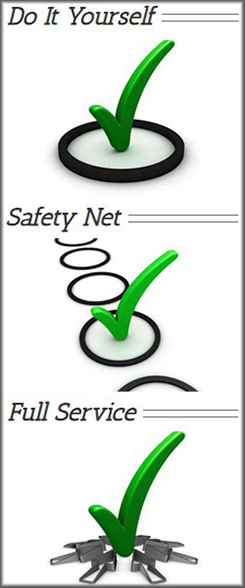Customer Measurement Problem and Effort
CONCLUDING THOUGHTS
Jump To Page – Intro, 1, 2, 3, 4, 5, 6, 7, 8, 9, 10, 11, 12
 In the late eighties and early nineties, many companies were herding to get on the customer satisfaction bandwagon. They had become convinced that customer measurement was important to future business success. It was almost revelatory that customers themselves should be the ones to provide data on customer expectations, customer experiences, perceived service quality, perceived value, intentions to continue and intentions to give positive word of mouth recommendations. Today, most of the core ideas are well ingrained at most major corporations.
In the late eighties and early nineties, many companies were herding to get on the customer satisfaction bandwagon. They had become convinced that customer measurement was important to future business success. It was almost revelatory that customers themselves should be the ones to provide data on customer expectations, customer experiences, perceived service quality, perceived value, intentions to continue and intentions to give positive word of mouth recommendations. Today, most of the core ideas are well ingrained at most major corporations.
Customer measurement today may exist in any number of varied organizational functions or departments, under any number of varied names, under a variety of levels of organizational leadership. In terms of presence or absence, most large companies at least have something in place. The depth and breadth of that something, however, varies considerably. Certainly there are companies whose efforts and activities include state-of-the-art best practices. I have been fortunate enough to work with a number of companies possessing that kind of vision, passion, and commitment to customer measurement and management. But even among advanced forward-thinking companies, and certainly among other companies, there still are significant gaps with respect to comprehensive best-practice designs and execution. For many, there are significant missing pieces of a very important full customer measurement picture.
In this paper, I’ve outlined twelve specific gaps I’ve seen with some frequent level of recurrence. In practice, there are additional gaps from best practice that also are observed. Twelve is admittedly an arbitrarily chosen number. However the specific twelve discussed, much like a factor analytic model, capture a large proportion of the variance in that broader set of observed gaps.
Twelve problems are plenty for most organizations to consider, and fortunately it is likely that not all of the problems will be present for any given organization. That is, their customer measurement programs may already address some or even most of the issues I’ve raised here. But for most organizations, there also is likely to be a smaller subset of at least a few from the list, where activity is not taking place, where improvement efforts should be implemented, and where the issues described register with a certain “voltage” when considered against the organization’s strategic objectives. In that sense, my hope is that this paper has outlined some broad initial directions for remedial action.
For academically-oriented researchers, my hope is that the discussion of these twelve issues will impact existing and future research agendas. Not only does consideration of the issues have the potential to make many programs of research more relevant for businesses, but also, the possibilities for hypothesis generation should be substantial. My hope would be that new lines of research activity, or new trajectories of current research activity, are sparked by the discussion of these twelve issues.
Ultimately, regardless of a given reader’s sphere of practice, consideration of the twelve issues here should help to advance current practices in customer measurement, management and research. We’ve got to get beyond the one “kind” of measurement and research that likely comes to mind when the term “customer satisfaction” is mentioned. The set of issues here imply a far broader integrated system of many “kinds” of customer information, and many specific lines of action regarding measurement, management, and scientific investigation. And while the depth and breadth inherent in this set of issues really does constitute something well beyond the current status quo for many companies, the dominant overriding objective has never changed. At the highest level, our goal in applied customer measurement is to use customer intelligence to facilitate profitable growth. Addressing these dozen common problems will help to further catalyze that ultimate aim.




